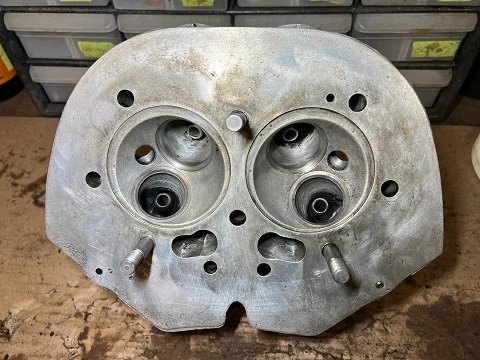Repair Cracked Cooling Fins
Article by Mark Trotta
All too often, a motorcycle cylinder is used as a platform for prying the head off, without checking to see if all the head bolts are removed!
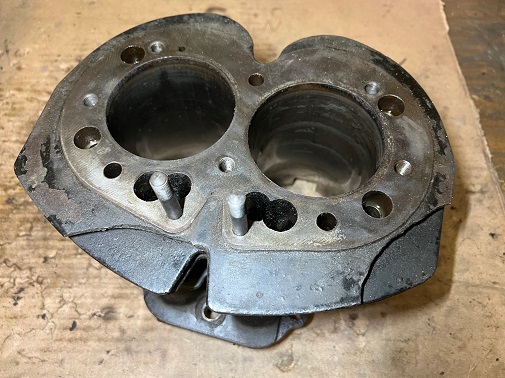
Motorcycle cylinder heads often share a similar fate.
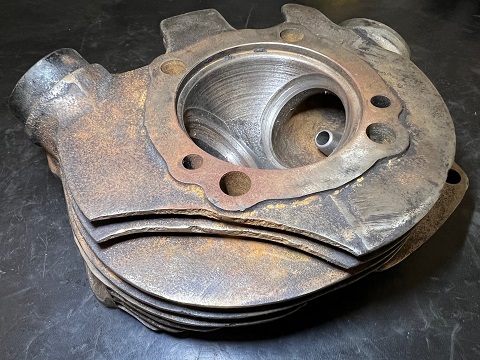
***********************
Do I Need To Repair A Broken Cooling Fin?
We have to remember the purpose of fins. Aside from being cool looking, their main function is to dissipate heat from air-cooled engines.
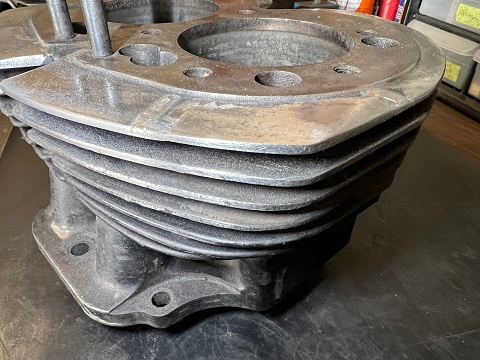
A small chip (less than 1/2") on the outer edge of a fin is considered cosmetic, and can be left alone, but broken fins busted down to the center will affect heat dissipation. It also decreases the value of the bike.
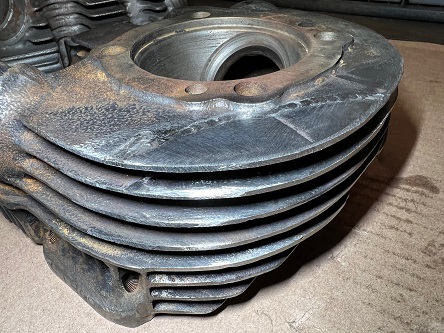
Have you checked to see if a replacement head or barrel is available? If not, the only option is to repair yours. Fins are generally not in eyesight, so the degree that you finish them is entirely up to you.
***********************
Epoxy?
For those looking for a quick fix - I've heard of people taping cardboard under the fin, then smearing on epoxy and letting it harden. If this sounds like a good idea to you, this article isn't for you.
The correct way to repair broken cooling fins on a classic motorcycle is by welding. The success of the repair will depend on selecting the correct width and grade of metal, cutting and shaping a patch to fit, properly welded it in, and then final trimming.
NOTE: This article explains how to repair cast-iron motorcycle cylinders and heads. Repairing aluminum will have the same procedures, but the welding process is different.
***********************
Cast-Iron Metal Repair
To properly repair a cast-iron cylinder barrel or head, it must be off the motor. Why? Because the welding process heats up the metal way beyond normal operating temperatures, which affects everything else around it. So factor in disassembly and re-assembly.
Of course, if it's a project bike that's already disassembled, you're one step ahead in the repair process.
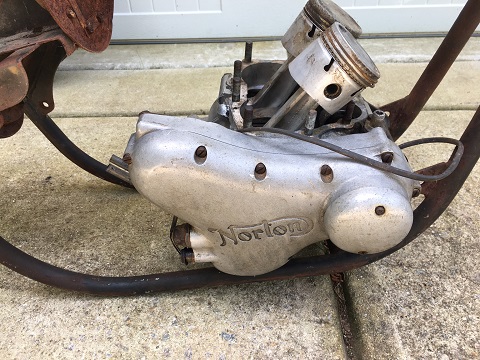
***********************
Making A Fin Patch
Very often, the piece that broke off is missing, so one has to be fabricated.
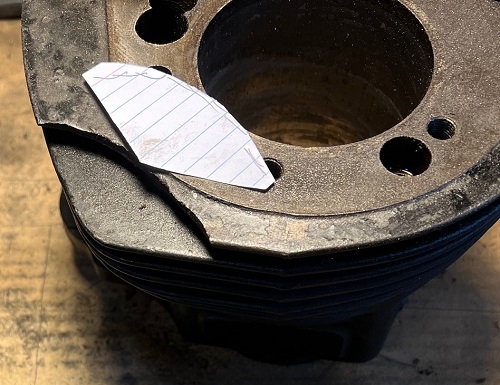
A 3" x 5" index card makes a good template for the patch.
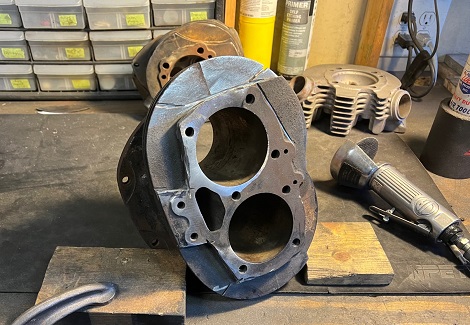
The best choice for a fin patch is to have a "donor" cylinder from the same make and model.
If a same make/model donor is not available, the next choice would be a piece of mild steel, the same thickness as the other fins (usually about 1/8" thick).
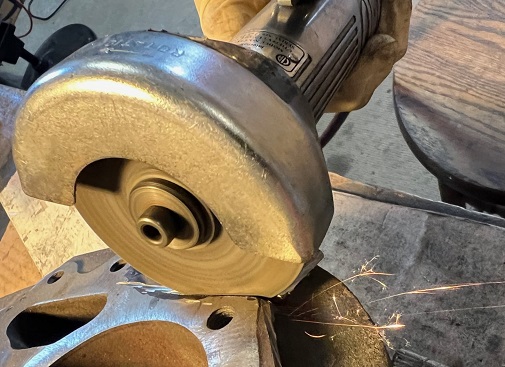
Cutting cast-iron in tight places can be done with a air-powered die grinder or an electric angle grinder.
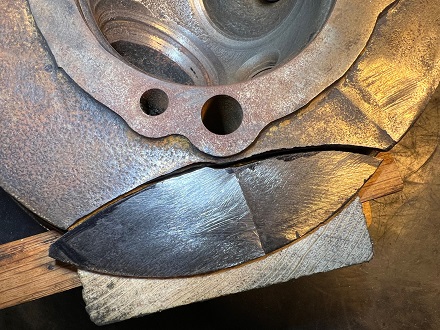
The next step includes cutting and shaping the fin patch to the required size.
Bevel Inside Edge
When satisfied with the fit, make a 45 degree bevel (chamfer) on the part that's going to be welded. Beveling makes the weld gap wider than it is deep, which gives a better bead penetration.
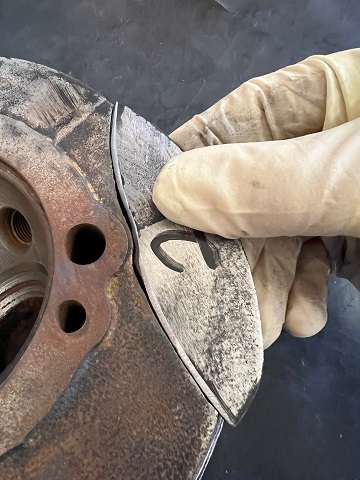
Smoothing the jagged edges of the broken section on the cylinder is helpful, but not always do-able. At the very least, it should be scuffed up with a stainless or mild steel brush.
***********************
Best Way To Weld Cast-Iron
Although several methods can be used, TIG welding is the most efficient way to weld cast-iron. Clean/sand the entire surface to be welded down to bare metal.
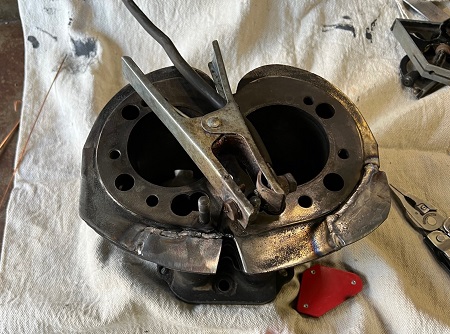
Position the fin-patch with either magnets or strips of metal and washers. You want a tight tolerance, but not too tight, as a small gap is needed for the weld bead.
To help prevent cracks, preheating is necessary. An Oxy-acetylene torch is helpful for this.
Start with a tack-weld at either end, and then one in the middle. Allow time between passes to ensure sufficient cooling. After welding, cast-iron needs to be cooled slowly to avoid cracking.
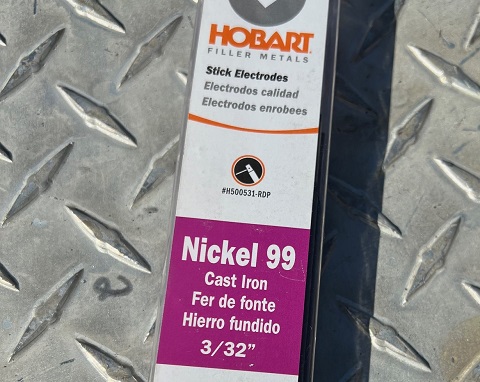
The repairs in this article were done with a Lincoln TIG welder set to DC, with Argon gas. Welding rods were 3/32" Nickel 99.
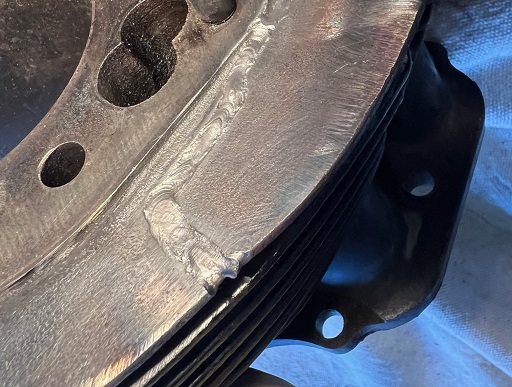
Fin-patch welded in and ready for final trimming.
***********************
TIP: Before repairing broken fins on any cylinder head, check the valve seats. It's Ok if the seats need cutting, but if they need replacing AND you have broken fins, it's best to look for another head.
***********************
Conclusion
If you have a classic motorcycle with a broken fin or two, take the extra steps and expense and have it repaired correctly. When done, there will be little or no sign of the repair. and your bike will be more valuable.
TIP: When fabricating a fin-patch, leave a little extra metal on the outer edge. You'll find it easier to do the final-trim with other fins around it.
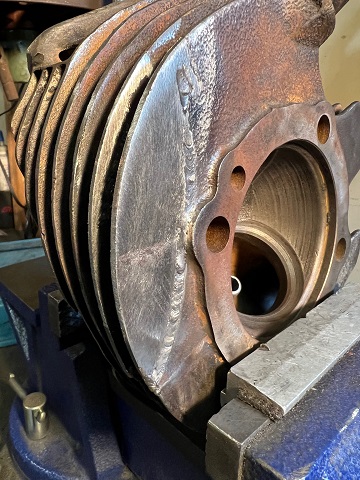
Fin-patch after welding/before final trimming.
***********************
Related Articles:
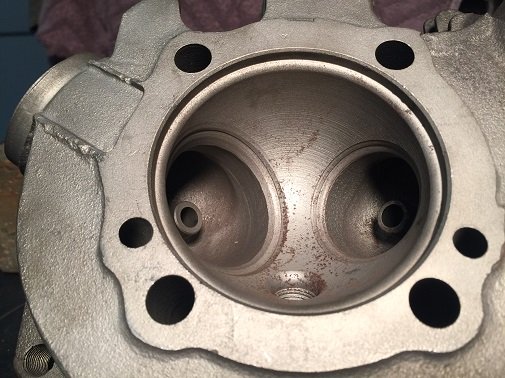
Motorcycle Valve Job
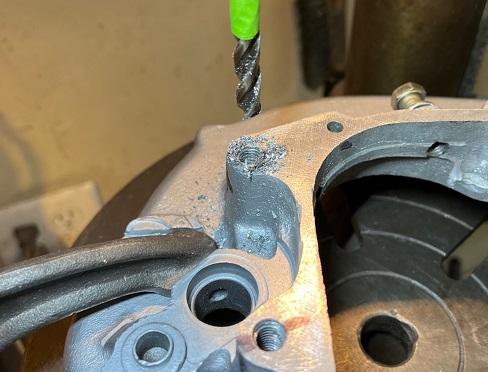
Repair Stripped Threads In Aluminum
